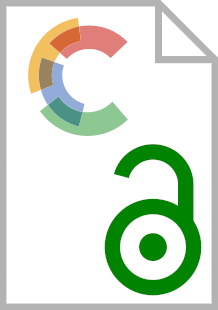Date: 2021
Type: Thesis
Three essays in experimental economics
Florence : European University Institute, 2021, EUI, ECO, PhD Thesis
KUJANSUU, Essi Susanna, Three essays in experimental economics, Florence : European University Institute, 2021, EUI, ECO, PhD Thesis - https://hdl.handle.net/1814/71735
Retrieved from Cadmus, EUI Research Repository
The first chapter studies how a gift exchange labor market reacts to the occurrence of negative shocks. One-round shocks may hit either workers’ wages or employers’ earnings. In our model, other-regarding preferences suffice to predict gift exchange and wages above the competitive level. The model predicts wage rigidity if we add wage illusion and loss aversion. Using a real-effort laboratory experiment, we find support for this model. When there are no shocks, there is gift exchange. After a wage shock we see strong nominal wage rigidity and no impact on workers’ effort, as predicted. Rigidity is also observed after a productivity shock, but here we observe increases in effort, especially at low wages. The latter is contrary to the model predictions and suggests that productivity shocks alter gift-exchange patterns. The second chapter studies how workers’ effort responds to wage cuts and whether employers anticipate these reactions correctly. Hiring happens by initial offers before shocks are announced. The non-binding offers can then be adjusted. To model responses to wage cuts, I add negative reciprocity to the previous model. Without shocks, employers should never cut wages. Adjustment might be, however, justifiable after a shock if sharing its burden is considered to be fair. With a laboratory experiment, I find that although wage cuts are counterproductive, their effects are insignificant in the absence of shocks. After shocks, wage cuts are punished, regardless of whether the shock hits employers or workers. The third chapter studies if nudges influence behavior as effectively when people are aware of nudging as when they are unaware. I use a limited attention model that distinguishes between two kinds of nudges. System 1 nudges (e.g., defaults) provide quick decision-making shortcuts, while System 2 nudges encourage reflective thinking, e.g., costbenefit analysis. Transparency is predicted to reduce the effectiveness of System 1 nudges but not that of System 2 nudges. Moreover, conditional on Choice Architects having image concerns, transparency is predicted to reduce the use of System 1 nudges while increasing the use of System 2 nudges. With an online framed field experiment, I find that transparency does not change how Choice Architects use nudges. The effects of System 1 nudges are somewhat weakened by transparency, but System 2 nudges are unaffected.
Table of Contents:
-- 1: Shocking Gift Exchange,
-- 2: Fairness of Wage Cuts,
-- 3: Choice Architecture and Transparency
Additional information:
Defence date: 21 June 2021; Examining Board: Michele Belot, Cornell University, Supervisor; Arthur Schram, EUI and University of Amsterdam, Co-Supervisor; Heike Hennig-Schmidt, University of Bonn; Christina Gravert, University of Copenhagen
Cadmus permanent link: https://hdl.handle.net/1814/71735
Full-text via DOI: 10.2870/34846
Series/Number: EUI; ECO; PhD Thesis
Publisher: European University Institute
LC Subject Heading: Economics -- Methodology; Experimental economics; Labor economics
Files associated with this item
- Name:
- Kujansuu_2021_ECO_FinalCorrect ...
- Size:
- 3.332Mb
- Format:
- Description:
- Full-text in Open Access

